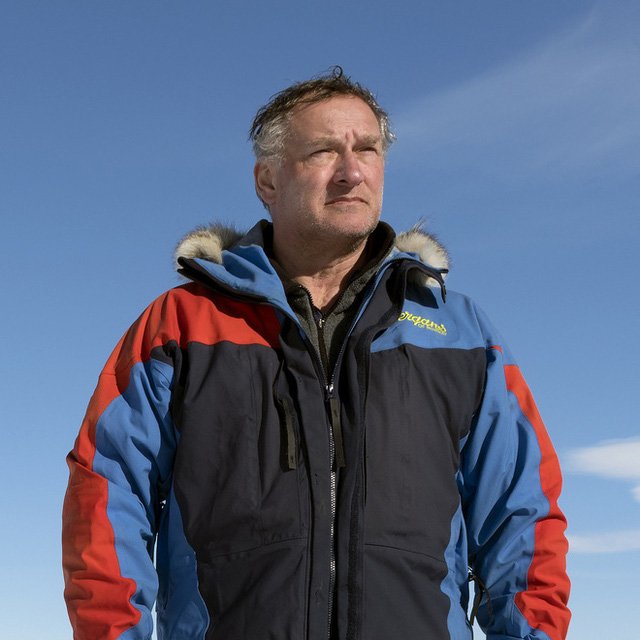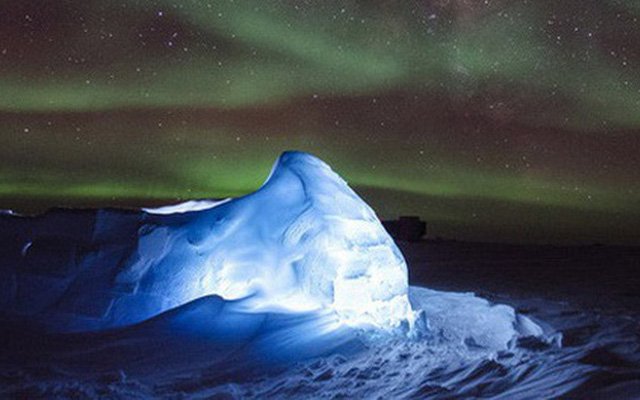In the international professional mountain climbing world, achieving the title `Explorers Grand Slam` means conquering the greatest achievements in the journey to the North Pole, the South Pole and the 7 highest peaks on the 7 continents of the Earth.
The pinnacle of adventure covering all corners of the planet, the Explorers Grand Slam is worthy of being the highest honor of all time for a professional mountaineer/adventurer.
Explorers Grand Slam brings together the overall qualities of a great explorer: Unsurpassed courage, endurance to overcome all challenges of nature, and an unshakable will to reach the peak.
Explorers Grand Slam or Adventurers Grand Slam is an extremely harsh adventure challenge, requiring an individual to complete a series of challenges: Climb all 7 highest peaks of 7 continents in the world – Go to 2 points
In 1998, world exploration history recorded that David Hempleman-Adams – a British explorer born in 1956, became the first person to complete the Explorers Grand Slam challenge.
Among the 69 explorers who have achieved the Explorers Grand Slam title from 1998 to present, the name Victor Vescovo – a great American explorer born in 1966 – must be mentioned when he is the only person in the world to have just completed it.


Left photo: Sir David Hempleman-Adams – Right photo: Victor Vescovo.
There are many other names honored by the Explorers Grand Slam in the world.
The feeling of placing Mount Everest under your feet and looking out from the `roof of the world` to see everything is an unforgettable moment in life, yet, there are still explorers (men, women)
Let’s see what great challenges those 69 great people have gone through to prove: Although their strength is small, their will is still higher than nature!
Geographic North Pole and Geographic South Pole.

Along with climbing all 7 highest peaks on 7 continents, explorers must set foot on the 2 furthest points on Earth, the northernmost point (in the Arctic) and the southernmost point (in Antarctica), to earn the title of Explorers Grand.
1. Arctic
The northern most point on Earth is found at latitude 90° North, where all meridians meet (the starting point of all meridians) and where all directions are South, and all lines of longitude

Winter temperatures here range from −43 °C to −34 °C.
2. Antarctica
The southernmost point on Earth, found at 90 degrees south latitude, is located on the Antarctic continent which is 1.5 times the size of the United States, twice the size of Australia and 58 times the size of the United Kingdom.

It contains 90% of the world’s ice and 70% of the world’s fresh water.
This place is located 2,835 m above sea level but its underlying ice layer is also 2,700 m deep.
1. Mount Everest – 8,848 m, highest in Asia
As the highest mountain on Earth and the highest in Asia, Everest is located in the heart of the Himalayas – the highest mountain range on the planet.
Everest is known as `The world’s largest open-air death zone`, because it possesses the harshest challenges of all the remaining high peaks on Earth: Possessing the `Death Zone` (Death Zone).
`At Death Zone, even when wearing an oxygen tank, people still find it difficult to breathe as if they were running on a treadmill (fastest speed) but only breathing through a straw.`
On May 29, 1953, history recorded for the first time that a group of two explorers, Sir Edmund Hillary (New Zealander, died in 2008) and Tenzing Norgay (Nepalese, died in 1986), successfully conquered the `roof`.
2. Peak Kilimanjaro – 5,895 m, highest in Africa
As the highest mountain peak in Africa, Kilimanjaro is ranked 4th among the 7 peaks of the Explorers Grand Slam, but considering its independent position, Kilimanjaro is the tallest free-standing mountain in the world.
Mount Kilimanjaro is located in the northeastern United Republic of Tanzania, in the east of the continent, near the equator and a short distance from the border with Kenya.
Hans Meyer, a German mountaineer, was the first person in the world to successfully conquer Kilimanjaro in 1889.
3. Denali Peak – 6,193 m, highest in North America
Also known as Mount McKinley, Denali is the highest mountain in North America, located in Alaska – an American state, in Denali National Park.
The most outstanding feature of this highest peak on the North American continent is that it has some of the harshest weather in the world and maintains this challenging state almost all year round, which is why Denali ranks first among the 7 peaks of Explorers Grand
American climbers Hudson Stock, Harry Karstens, Walter Harper and Robert Tatum first successfully conquered Denali on June 7, 1913.
4. Aconcagua peak – 6,961 m, highest in South America
Aconcagua – in the Andes – owns 4 altitude records: It is the highest mountain in South America;
This mountain peak is located in Argentine territory near the border with Chile.
In 1897, Swiss mountaineer Matthias Zurbriggen was the first person in the world to successfully conquer Aconcagua.
5. Vinson Massif peak – 4,892 m, the highest in Antarctica
Of the seven peaks of the Explorers Grand Slam, Vinson Massif is the coldest peak with temperatures always remaining at minus 68 degrees Celsius.
1200 km from the Earth’s South Pole, Vinson Massif is in the Ellsworth Range near the Antarctic Peninsula and lies within territory administered by Chile under the Antarctic Treaty.
In 1966, an American climbing team including Barry Corbet, John Evans, William Long and Pete Schoening successfully conquered this bone-chilling peak.
6. Mount Elbrus – 5,641 m, highest in Europe
The highest mountain in Europe (not Mt Blanc as commonly thought), Elbrus is located in the Caucasus Mountains in Russia, near the borders of Georgia and Armenia.
Not only is it the highest in Europe, Elbrus is also the highest volcano in Eurasia and among the top 10 most prominent peaks in the world.
A cable car has been built by the Russian government that runs from the base of the mountain to an altitude of 3,657 m, making climbing much more accessible.
In July 1874, English climber Crauford Grove and a Swiss guide Peter Knubel were the first two people to successfully conquer the summit of Mount Elbrus.
7. Kosciuszko Peak – 2,228 m, the highest in Australia
Kosciuszko is located in the Snowy Mountains on the border of the Australian states of New South Wales and Victoria, near the capital Canberra.
This is the `lightest` and easiest peak to climb in the Explorers Grand Slam, with the climb taking about 7 hours.
It is believed that local aborigines were the first to climb Mount Kosciuszko, but the first Westerner to reach the peak was a Polish climber, Edmund Strzelecki, in 1840.
After conquering all 7 highest peaks of the 7 world continents, explorers must set foot on the 2 furthest points on Earth, the northernmost point (in the Arctic) and the southernmost point (in Antarctica), to win the title.
The article uses source: Explorersgrandslam.com


